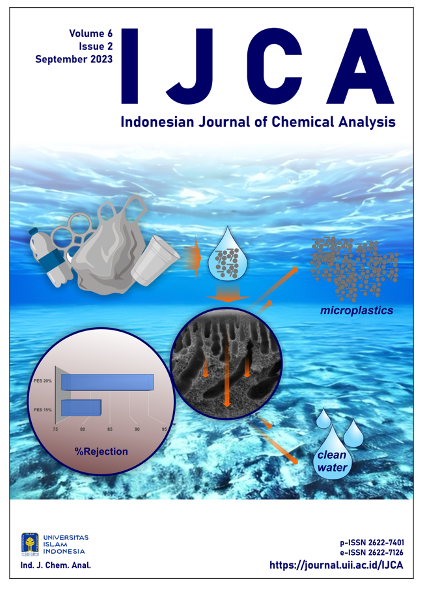Main Article Content
Abstract
Halal food safety issues receive serious attention. Methods for analyzing contamination of non-halal ingredients, such as lard, must be developed to assist in the halal authentication process for food. This study was conducted to compare the fat profile of pork thighs using FT-IR and GC-MS. The pork is dried in the oven and then extracted using n-hexane. The resulting fat was characterized by FT-IR. Determination of fatty acids was carried out by GC-MS using a derivatization technique. Based on the results of the study showed that the infrared pattern of lard can be identified from the difference in absorption intensity. Pork fat has a higher unsaturated fatty acid content than beef and chicken. Infrared spectra can confirm the presence of -C=C- bonds at 3005, 1745, 1116, 1550, and 722 cm-1. The FTIR data shows that there are larger unsaturated fatty acid groups in pork fat than in beef and chicken fat. This procedure is a non-destructive method that can be carried out quickly, and cheaply, and can be developed into a routine procedure for halal authentication of food. Based on the results of unsaturated fatty acid testing with GC-MS it can show the content of oleic acid (C18:1) contained in pork. The results of mapping the content of free fatty acids in pork can be used to complete halal authentication data easily and quickly.
Keywords
Article Details

This work is licensed under a Creative Commons Attribution-ShareAlike 4.0 International License.




